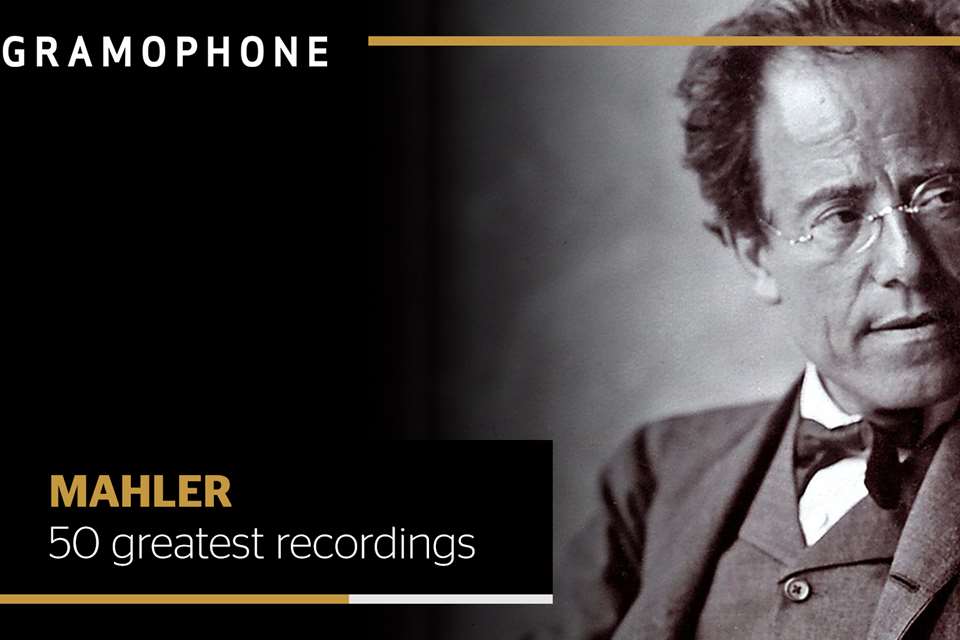Mahler's Symphony No 4: the greatest recordings
David Gutman
Wednesday, November 17, 2021
Naivety or knowingness? Conductors from Abbado to Zinman have offered takes on this fin de siècle masterpiece, writes David Gutman
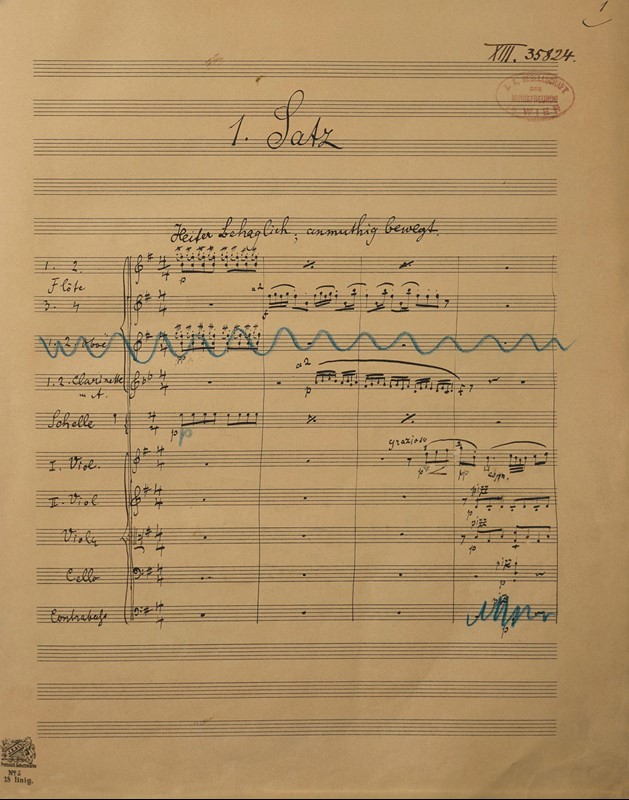
Sleigh bells ring: the opening page of Mahler’s autograph score of the Fourth Symphony (Bridgeman Images)
In the early 1950s the ever-sceptical Record Guide of Edward Sackville-West and Desmond Shawe-Taylor already understood that at his best Mahler had ‘achieved a final precision in the expression of nostalgia for the low ceilings, the wavering nightlight, the fields and woods, the unambiguous affections, the stilled terrors and the sharp, fleeting raptures of childhood’. Unlike most Mahler symphonies, his fin de siècle Fourth did not take decades to secure a place in the repertoire. Its comparative brevity and relatively modest orchestration seem to have emboldened colleagues, acolytes and their disciples to parade their insights in concert and preserve them for posterity.
Today’s discography contains few significant gaps. We can only guess how Henry Wood and his first wife dealt with the British premiere at the Proms on October 25, 1905 – but we are able to eavesdrop on the composer himself. On November 9 Mahler was in Leipzig to set down a strangely uneven piano reduction of the finale alone for M Welte & Sohne (Dal Segno, 6/04, Accentus, 8/13 etc). Blame the piano roll mechanism or the executant for the lumps and bumps. Or could it be that Mahler’s ‘funny walk’ – the incessant ‘change of pace’ recalled by musicians who played under his direction in New York – fed into his performance style? There is a sense in which Willem Mengelberg, live in Amsterdam at the start of the Second World War, leads the whole work this way, letting the music tell a story for which the printed score is merely the starting point. Then again, how likely is it that Mahler, a frequent guest with Mengelberg’s orchestra, ever heard his friend conduct a finished performance of his music? Mahler’s metronome marks as logged by Mengelberg are by no means identical to those he himself adopted in 1939. The different priorities of Bruno Walter, Mahler’s own protégé, or Otto Klemperer, least sentimental of his aides, remind us of the pitfalls of retrospectively imputing authenticity, not to mention the elusive nature of the work itself.
Compositionally speaking, the finale came first, a seemingly unassuming setting of verse from the voluminous anthology of traditional German poems, Des Knaben Wunderhorn (‘Youth’s Magic Horn’). As early as February 1892 Mahler completed a setting for voice and piano of a child’s naive evocation of celestial bliss to which he ascribed his own title, ‘Das himmlische Leben’ (‘Heavenly life’). Orchestrated and performed, it remained unpublished, having been earmarked for inclusion in the Third Symphony. Later it became the goal of a new symphonic project, more explicitly journeying from complexity to simplicity, on which he worked between June 1899 and April 1901, mainly during his summer breaks. Making the song appear as the logical destination of three new symphonic movements was a challenging assignment for the composer, as it has been for his interpreters.
Mahler himself conducted the first performance in Munich on November 25, 1901. As ever the critics were bewildered. The last of his symphonic flirtations with Romantic nationalism also points the way to a texturally transparent, anti-representational art of the future. So is it an ode to youthful innocence in an increasingly industrialised world or something more sceptical? Beethovenian archetypes abound. The slow movement seems to channel the wondrous quartet from Act 1 of Fidelio, one thread in the first movement is provided by a Beethoven piano concerto (No 4 in G for another No 4 in G), while Mahler’s brief preamble feels indebted to the impish Allegretto scherzando of the Eighth Symphony. The jingling bells, evoking the jester’s cap quite as much as an approaching sleigh, signal a unique synthesis of old and new. Simon Rattle, among the first to revel in the minutiae of discontinuity, makes the flutes and sleigh bells wholly independent of the ritardando of clarinets and first violins, an oil-and-vinegar effect no longer uncommon. Mengelberg has a different agenda, applying exaggerated Gemütlichkeit to the first three notes of the melody in the violins as if introducing a Viennese waltz. Others smooth things over and may not notice that the main tempo is intended to differ from that of the opening vamp. With many an equivocation to follow, the narrative drifts in and out of real time.
Listeners for whom the blue skies are threatened only fleetingly by storm clouds detect a return to the old Austro-German verities: a first movement with clear-cut themes developed and restated in sonata form, followed by a scherzo, slow movement and upbeat (albeit sung) finale. Mahler’s sound world can retain generalised Schubertian warmth or usher in the new century with a more manicured sonic palette. And what to make of the squeaky-clean precision nowadays mysteriously associated with period practice? When the composer indicates a string glissando we cannot say whether these should be slightly enlarged portamentos or something more ‘modern’: long, even slides which call attention to themselves like fingernails on a blackboard rather than confirming the direction of travel.
Each movement brings its technical challenges. The second was inspired by Freund Hein, a Death-surrogate and alternative Pied Piper from German folklore. Here the leader is required to tune the violin a whole tone higher than usual, the uneasy scordatura conveying, for Norman Lebrecht, ‘a migrant threat to sedate society’. Where an ensemble as a whole has reverted to gut strings it can make sense to give the depiction of Freund Hein a literally metallic core. The third movement, peculiarly affecting, is not all divine serenity, its ‘accelerating’ dancelike variations as difficult to pace as the emotive throwing open of the gates of Paradise is tough to pitch (intonationally and interpretatively). Audiovisual formats parade other variables, from the unfathomable variety of sleigh bells and seating plans to the sartorial presentation of the soloist and her arrival on stage.
‘Who have you cast for the soprano solo?’ asked Mahler in 1904. ‘She must be capable of singing with a naive, childlike expression, and with particularly good diction!’ Solutions come in all shapes and sizes. Leonard Bernstein’s first, 1960 recording, curiously denied a separate release in the UK, was a breakthrough for Reri Grist, an unaffected artist just emerging from music theatre (expressly West Side Story). In preparing for his third version (DG, 8/88) Bernstein was seduced by the plainer sound of the boy treble. Those who consider the experiment doomed to failure should seek out Anton Nanut’s contemporaneous Ljubljana account (Stradivari Classics). His remarkably assured boy soprano, strong and true (and uncredited on some reissues) is Max Emanuel Cencic, today a renowned countertenor. Back in 1968 Maurice Abravanel could count on a Vanguard label stablemate, the polyglot Soviet-born Israeli soprano Netanya Davrath. As in Canteloube’s Chants d’Auvergne so here her silvery, folk-like timbre is unsullied by excessive vibrato, while the breezy tempo is not far off Mahler’s (even if that was designed for domestic consumption).
Canny indeed those with the foresight to preserve future stars in their early prime. Even in 1970 Margaret Price was not perhaps a ‘natural’ for childlike wonder yet her glorious, firm singing raises to another level what now seems a rather penny-plain traversal from Jascha Horenstein’s LPO. The young Kathleen Battle, almost too creamy, complements the Sachertorte of Lorin Maazel’s Viennese reading. Juliane Banse copes admirably with impatience – Pierre Boulez in Cleveland (DG, 5/00) – and inertia – Giuseppe Sinopoli in Dresden (Profil, 8/08).
Close microphone placement can spoil the recipe. Sylvia McNair, vocally ideal, sounds constrained rather than intimate in Berlin with Bernard Haitink (Philips, 2/94). By contrast, Lisa Della Casa for Fritz Reiner (RCA, 8/60) reaches us as if from the far side of an Alpine valley. Nor is she always in tune. Singers conventionally defined as mezzos, on paper unsuited to the task, have sometimes triumphed. Dodgiest are the celebrity sopranos doing mid- or late-career star turns. Fining down her voice only to be defeated by the German text is the unlikeliest of them all, the great Galina Vishnevskaya, with David Oistrakh on the podium in 1967 (Russian Revelation, 6/97).
The first Fourth, the earliest electrical recording of any (almost) complete Mahler symphony, was made in Japan in May 1930. Viscount Hidemaro Konoye and his New Symphony Orchestra (precursor of today’s NHK Symphony Orchestra) were joined by soprano Eiko Kitazawa in Tokyo’s Parlophone Studio. As transferred to CD (Denon, 6/88), this is a curio rather than a contender. Best known in the West for recording the Horst Wessel Song with the Berlin Philharmonic and declining to perform Britten’s Sinfonia da Requiem, Konoye is understandably cautious. There’s a major cut at the heart of the slow movement and the last three bars of the finale exceeded the capacity of the original 78rpm side.
In his widely distributed New York set Bruno Walter hurries those two movements along, apparently in keeping with an interpretation lighter and more linear than Mengelberg’s. With an overall timing of 49'21" this is the shortest Mahler Fourth; the longest, clocking in at 65'05", is Wyn Morris’s (Collins Classics, 11/89). That the limitations of the medium inhibited the message is supported by the recollections of Walter’s soloist Dési Halban. Preserved in wiry sound, Walter’s 1950 Salzburg Festival performance (53'55") goes deeper and benefits from the seductive presence of Irmgard Seefried. Ragged entries indicate that the music was none too familiar, yet at a time of political uncertainty and economic privation the audience was reportedly in tears at the end.
Insofar as it existed, the Mahler tradition was strongest in Holland. Post-Mengelberg renditions by Paul van Kempen with Hilversum forces for Telefunken in 1950 and Edward van Beinum with the Concertgebouw Orchestra (Decca, 10/52) have been digitised by Pristine Audio. The Concertgebouw retains its distinctive sound, the first movement moving forwards at Mengelberg’s vigorous basic tempo but without his hair-raising bar-by-bar rubato. Fresh openness distinguishes Benjamin Britten’s Aldeburgh Festival relay. The eager, lean-sounding LSO of 1961, measured in the slow movement, is frisky elsewhere. Technical mishaps demonstrate that this is live and unedited. John Barbirolli finds more shadow in a fallible BBC Symphony Orchestra broadcast from a behind-the-Iron-Curtain tour (BBC Legends, 4/99). Although Heather Harper has a more appropriate timbre than Britten’s Joan Carlyle and unlike her never gets lost, she can’t quite make us believe in Barbirolli’s lethargic pacing.
Otto Klemperer, the last of Mahler’s intimate colleagues to set down a studio rendition, is a different kind of heavyweight. Ungenial in the first movement, he convinces in the second with his ponderous characterisation of the Austrian-sounding Trio. Then again, his Poco adagio moves too fast for ineffable serenity. Winds are typically left unblended rather than coasting on a cushion of strings. We cannot know whether these traits were present in the 1912 Hamburg rendering with which he made his professional concert-hall debut. One unlikely admirer is Yevgeny Svetlanov (CdM, 3/97), persuaded to opt (against type) for the same kind of literalism. Klemperer’s 1961 recording has tended to eclipse the Philharmonia’s earlier effort under Paul Kletzki (Columbia, 7/58), where the principal horn is Dennis Brain and the soloist Emmy Loose. Klemperer has the more marketable Elisabeth Schwarzkopf, anything but artless.
By now Leonard Bernstein had entered the fray, redefining what ‘Mahlerian’ might mean for a new generation in the US: a roller-coaster ride in which schmaltz and irony are seen as essential components of the style rather than lapses of taste. The neurotic tone (and jumpier transitions) might be thought to run counter to the Fourth’s classical temper, the slow movement touching rather than unduly relaxed. More satisfying is Bernstein’s audiovisual account from Vienna, 1972; Edith Mathis evokes heaven with lovely tone and a twinkle in her eye which is distinct from self-conscious ‘knowingness’.
Bernard Haitink had a special affection for this score, amassing as many as seven commercial recordings with various ensembles. Some of those could do with a bit more of the weightless élan of his earliest outing with what is still recognisably van Beinum’s band (Philips, 10/68). In a fondly remembered Christmas Mahler broadcast from 1982, Haitink encourages the Amsterdam players to give of their best and is notably well served by soloist Maria Ewing, every aspect of whose presentation rings true. The film stock has faded but how fascinating to see as well as hear Klaus Tennstedt in 1977. His marionette-like stance is Furtwänglerish, the music’s unfolding more obviously German even when the orchestra is the Boston Symphony. Lucia Popp graces his audio-only alternative (EMI, 4/83). George Szell’s Cleveland version, scrupulously prepared and long top-rated, has comparable Teutonic density.
With Mahler becoming mainstream, non-specialist conductors were encouraged to undertake one-off LPs or even complete cycles. Those pining for saturated string sonority can turn to Herbert von Karajan’s first Mahler symphony recording (DG, 11/79). André Previn’s sole Mahler disc (EMI, 9/79), highly regarded by some despite a wayward first movement, has more excitable (Pittsburgh) horns and brass. Likewise Georg Solti’s very present Chicagoans (Decca, 7/84). James Levine (RCA, 10/75), Franz Welser-Möst (EMI, 12/88) and Colin Davis (RCA, 7/96) excel in profound and variously drawn-out readings of the slow movement.
Lorin Maazel managed three recordings, the finest arriving during an otherwise lacklustre 1980s cycle. Devotees of the Vienna Philharmonic appreciate the wistful style, the slowly unspooling phrases. Even his sleigh bells sound mellow. The Scherzo is just unsettling enough. Maazel offers nothing galvanic, nothing remotely casual either. Close to him in mood is Michael Tilson Thomas in San Francisco, where superb orchestral playing is flattered by sound recording of hitherto unmatched sophistication. From the Mengelberg-style opening, MTT inhabits a dreamworld one is reluctant to leave. Does it matter that the refined torpor is almost certainly remote from anything Mahler intended, beauty standing in for truth?
The boom continues unabated. Valery Gergiev has releases targeting three discrete constituencies (LSO, 5/10; C Major, 8/11; Münchner Philharmoniker, 11/17). None offers the bucolic poetry of Rafael Kubelík’s Bavarian Radio forces in 1968. A Bohemian composer-conductor more lightly Germanised than Mahler himself, Kubelík first heard the Symphony under Alexander Zemlinsky in Prague in the early 1930s and directs it in almost chamber-like fashion. The breezy, unaffected quality which doesn’t quite pass muster in Mahler’s more gargantuan scores succeeds here. Insofar as Kubelík has heirs, they are Hungarian-born. Working in Düsseldorf, Adám Fischer nonetheless preserves that open-air feeling, more self-conscious in the moulding of detail as might be expected by 2016, still very persuasive. Younger brother Iván Fischer, whose expressive reach and dynamic range are wider, has the advantage of the Budapest Festival Orchestra and the ideal soprano for his zesty yet easeful finale. With Miah Persson invoking St Martha, it’s as if we’re transported to a small village church (fig 10), the organ made tangible in the exquisite treatment of the accompanying instrumental texture. Arriving at St Ursula’s laugh (fig 14), her descending glissando is so perfectly matched with that of the first violins that it takes the breath away. There are no weak links and the surround sound will delight audiophiles.
Other contemporary options include an ‘authenticist’ lobby whose antipathy to string vibrato brings a certain glassiness to sustained music. Philippe Herreweghe (PHI, 2/11) is less doctrinaire in this respect than Roger Norrington, who deploys his modern instruments with a close-miked brightness complemented by Anu Komsi’s detailed, pre-school characterisation. Of the ‘modernists’, Michael Gielen betters Boulez, albeit with a weaker soloist.
Standing slightly apart are Riccardo Chailly and Claudio Abbado. Chailly tapped into Mengelberg’s local legacy for his Mahler series with the now ‘Royal’ Concertgebouw (Decca, 4/00). More recently he has presented a tautened rethink in sound and vision, the best recorded and packaged in its class. In Leipzig everything is bright and immediate. Christina Landshamer delivers her child’s-eye view of the afterlife in a glamorous grown-up’s turquoise frock. Abbado is a subtler, silkier musician whose four versions chart his quest for collegial ways to make music. What sounds like choppiness in Vienna, with Frederica von Stade only theoretically miscast (DG, 6/78), feels appropriately agile with the Gustav Mahler Jugendorchester in 2006 (EuroArts) and hyper-sensitive in Lucerne in 2009. Some will avert their eyes from the fidgety antics of Magdalena Kožená and the fragility of the ailing maestro, conducting without a stick (save when rehearsal footage is ineptly spliced in). The hall is on the dry side.
Dozens of major recordings from Abbado in Berlin to Zinman in Zurich haven’t had a mention (and no one makes the finale’s initial muted cellos sound more like cattle lowing than Zinman). The evidence nonetheless suggests that rising playing standards don’t necessarily guarantee the twilit atmospherics – which is where we came in. If you’ve read this far you’ll be looking for something beyond the sheer competence of Vladimir Jurowski and his peers in a library choice, that special spark which Iván Fischer so deftly delivers. Abbado may magic more instantaneous rapture at the start of the slow movement but no 21st-century rival so skilfully squares the circle of neoclassical modernity and old-world charm. Fischer is at once crystalline and ‘retro’, recalibrating Mengelberg’s interventionism for our own time.
Library Choice
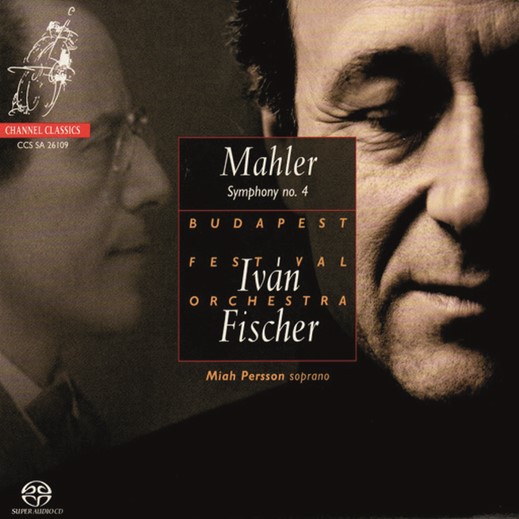
Persson; Budapest Festival Orch / I Fischer
Channel Classics
Though every detail is burnished into enchantment, Fischer manages to avoid a stage-managed effect. The slow music never lacks profundity, nor does the line flag when the argument needs to press on. Perfect singing, perfect playing, spontaneous-sounding rubato and state-of-theart sound.
Historic Choice
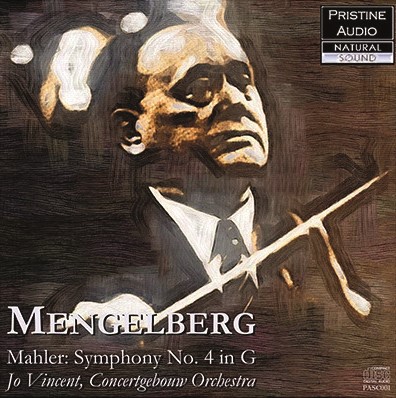
Vincent; Concertgebouw Orch / Mengelberg
Pristine Audio
A conductor with god-like status before blotting his copybook in the Second World War, Mengelberg imposes seemingly eccentric nuances on a timbrally distinctive band the composer knew well. The interpretation may or may not be modelled on Mahler’s own.
Chill-out Choice
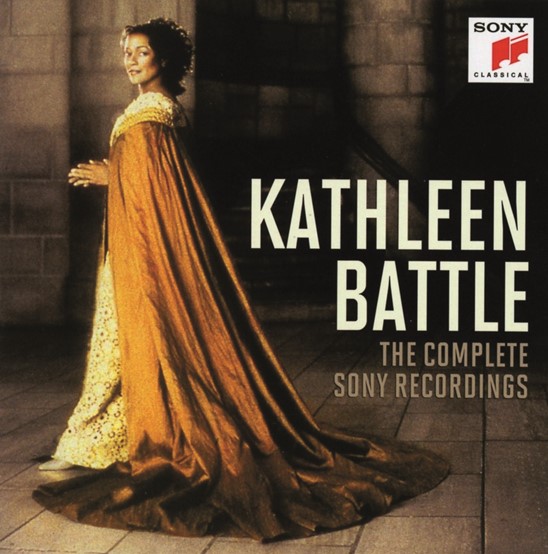
Battle; VPO / Maazel
Sony Classical
Maazel, at his most relaxed, lets the Vienna Philharmonic do its thing while soprano Kathleen Battle does hers. While some will deem the results insufficiently Grimm (sic), there’s nothing transatlantic about the music-making and the exquisite details show that no one is coasting.
AudioVisual Choice
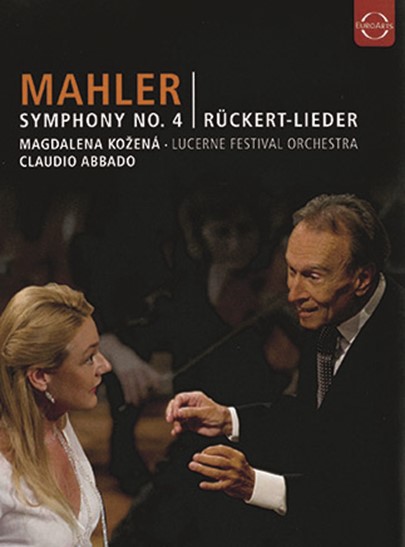
Kožená; Lucerne Fest Orch / Abbado
EuroArts
The audiovisual winner finds Abbado near the end of his career coaxing a performance of chamber-like delicacy from the world’s classiest citizen-of-nowhere scratch band. The filming may not be perfect but the players actually smile and what a luxury to have some silence at the end!
Selected Discography
Recording Date / Artists / Record company (review date)
1939 Jo Vincent; Concertgebouw Orch / Mengelberg / Philips 426 108-2 (4/86R); Pristine Audio PASC055
1945 Dési Halban; New York PO / Walter / Naxos 8 110876; Sony Classical 88691 92010-2 (9/46R, 7/73R)
1950 Irmgard Seefried; VPO / Walter / Orfeo C818 101B
1960 Reri Grist; New York PO / Bernstein / Sony Classical 88697 94333-2 (10/71R)
1961 Elisabeth Schwarzkopf; Philh Orch / Klemperer / EMI/Warner Classics 248398-2 (7/62R)
1961 Joan Carlyle; LSO / Britten / ICA Classics (20 discs) ICAB5141 (4/99R)
1965 Judith Raskin; Cleveland Orch / Szell / Sony Classical (106 discs) 88985 47185-2 (8/67R, 11/18)
1968 Elsie Morison; Bavarian RSO / Kubelík / DG 483 5656GM11 (12/68R, 8/75R)
1968 Netanya Davrath; Utah SO / Abravanel / Vanguard ATMCD1212; Musical Concepts MC182
1970 Margaret Price; LPO / Horenstein / EMI/Warner Classics 608985-2 (5/71R, 7/84R)
1972 Edith Mathis; VPO / Bernstein / DG 073 4090GH2; 073 4088GH9 (2/06)
1977 Phyllis Bryn-Julson; Boston SO / Tennstedt / ICA Classics ICAD5072
1982 Maria Ewing; Concertgebouw Orch / Haitink / Arthaus 109 108; 109 109
1983 Kathleen Battle; VPO / Maazel / Sony Classical 88985 38136-2 (3/85R, 1/86R)
1988 Christine Whittlesey; SWR SO / Gielen / SWR Music SWR19042CD (6/18)
1997 Amanda Roocroft; CBSO / Rattle / Warner Classics 9029 58691-7 (6/98R)
2003 Laura Claycomb; San Francisco SO / Tilson Thomas / SFS Media SFS0004 (7/04); SFS0039
2005 Anu Komsi; Stuttgart RSO / Norrington / SWR Music SWR19524CD (10/06R)
2008 Miah Persson; Budapest Fest Orch / I Fischer / Channel Classics CCSSA26109 (4/09)
2009 Magdalena Kožená; Lucerne Fest Orch / Abbado / EuroArts 205 7988; 205 7984 (2/11)
2012 Christina Landshamer; Leipzig Gewandhaus Orch / Chailly / Accentus ACC20257; ACC10257 (8/13)
2016 Sofia Fomina; LPO / Jurowski / LPO LPO0113 (9/19)
2016 Hanna-Elisabeth Müller; Düsseldorf SO / A Fischer / AVI-Music AVI8553378 (1/17)
This article originally appeared in the February 2020 issue of Gramophone. Never miss an issue – subscribe today!





